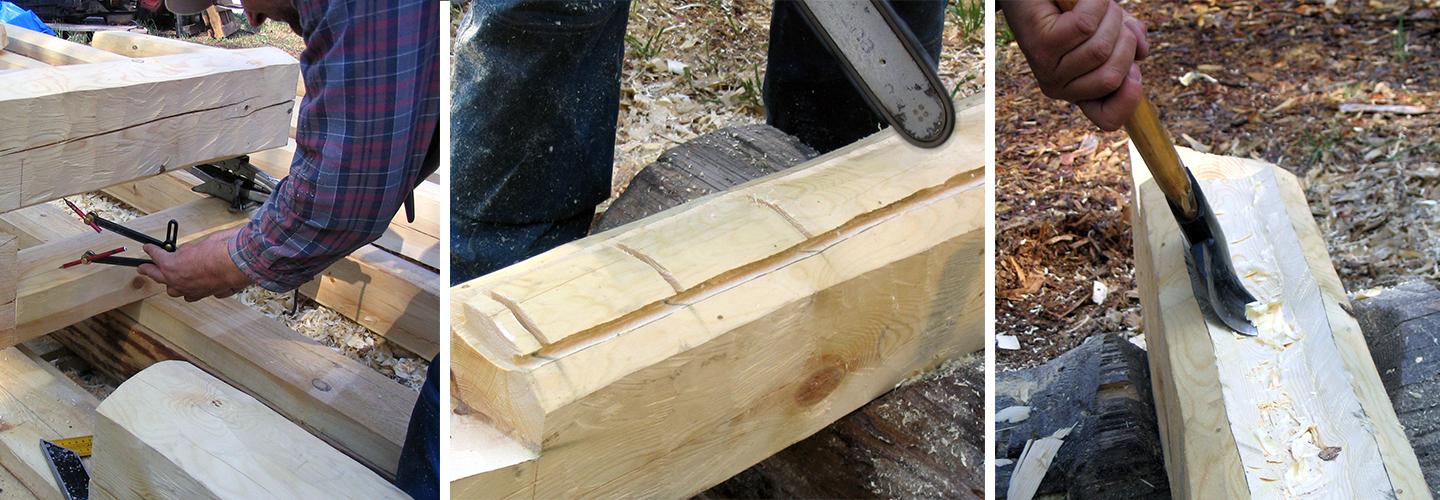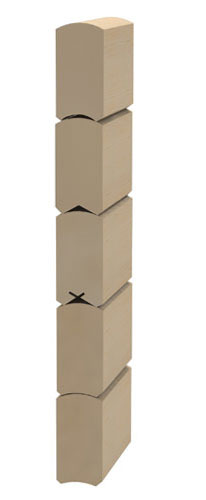Logs are adapted on top of each other by means of longitudinal grooves made at the bottom of a log. When made by hand, the grooves can be made either as a closed, open or claw grooves.


In an open groove, the weight of logs rests in the longitudinal middle part of the log. An open groove can be sealed afterwards if any point is left poorly adapted.
In a closed groove, the sealing is placed in the space inside the groove, and the weight of the log rests on the edges of the groove.
The claw groove is the best and most demanding of the grooving methods, but on the other hand it is the one that can be cut the fastest. It accomplishes the rigidity of a closed groove and the tightness of an open groove, because it can be sealed afterwards.
The longitudinal grooves of modern, industrially manufactured logs are made by planing. Different kinds of profiles (tongues and grooves) have been developed for them so that the tightness of the groove could be improved.